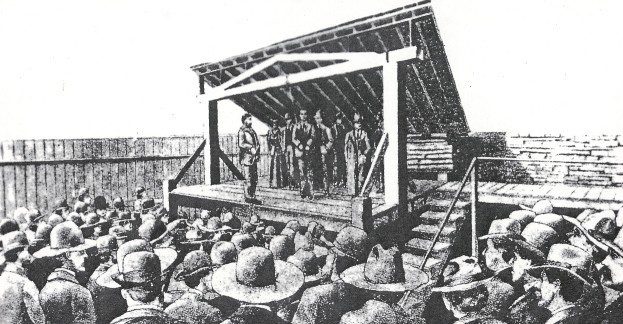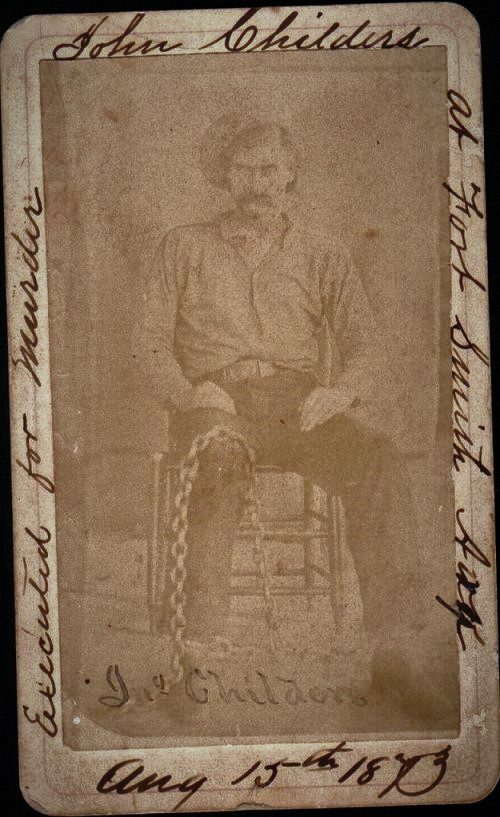By Dr. Curtis Varnell
The period after the Civil War was a dangerous and violent period of time and lawlessness often resulted in terminal cases of frontier justice. Between 1873 and 1896, eighty-six men were hanged in Fort Smith for various crimes, primarily rape or murder, both of which required a mandatory death sentence.
The first of those hangings directly involved individuals from the River Valley. John N. Sarber, the carpetbagger for which Logan County was first named, served in the Arkansas legislature after the Civil war and then was appointed as U.S. Marshall by President Grant. He and his wife, residents of Clarksville, temporarily moved to Fort Smith to better enable him administering an area extending into Indian Territory.
Sarber inherited the case of John Childers, a convicted murderer from Oklahoma territory. Childers had been arrested and convicted of murdering a traveling peddler by the name of Reyburn Summer. He initially escaped from the jail in Van Buren but was recaptured and brought to the new court and jail in Fort Smith. Childers always felt he would get a reprieve, but just in case, he had a large number of criminal friends who were determined to help him escape.
Aug 15, 1873 arrived without a cloud in the sky. Hangings were public events with huge attendance, this one attracting up to 5,000 individuals. Vendors sold refreshments and people fought for front row seats. Sarber, fearful of Childers’s friends, hired over one hundred deputies to assist.
The muscular 5’11-inch-tall Childers stood on the hanging platform calmly smoking a cigar while looking over the crowd. Sarber slowly read the death warrant and then asked Childers if he had anything to say. Childers admitted he killed Summer but felt he should be released because of a technicality. He then stated he had friends in the audience that would free him. Sarber interrupted to ask him to provide the names and he would stop the hanging.
Childers looked over the crowd, seeing many of his boon buddies and friends in crime but not wanting to inform on them, he replied to Sarber, “Didn’t you say you were going to hang me? “Yes,” replied Sarber. “Then,” replied Childers, “Why the hell don’t you.” The deputy immediately dropped the bolt. As the door fell beneath Childers feet, a tremendous clap of thunder shook the earth, drowning the fall of the body. A bolt of lightning shot from the sky, hitting the frame of the gallows, sending sparks flying in every direction. A woman in the crowd shrieked, “John Childers soul has done gone to hell- I heard the chains a clanking.” The dark cloud immediately over the gallows bust open and it rained hard for several minutes.
So ended the first hanging on the infamous gallows located at Fort Smith National Park.
Eighty-five additional men were hung on the gallows, most during the administration of Judge Isaac Parker. Many were carried to the nearby cemetery in the sheriff wagon now located at the Coal Miners Museum in Paris. Still a question of whether capital punishment deters crime, we do know that those eighty-six individuals never committed another crime.







